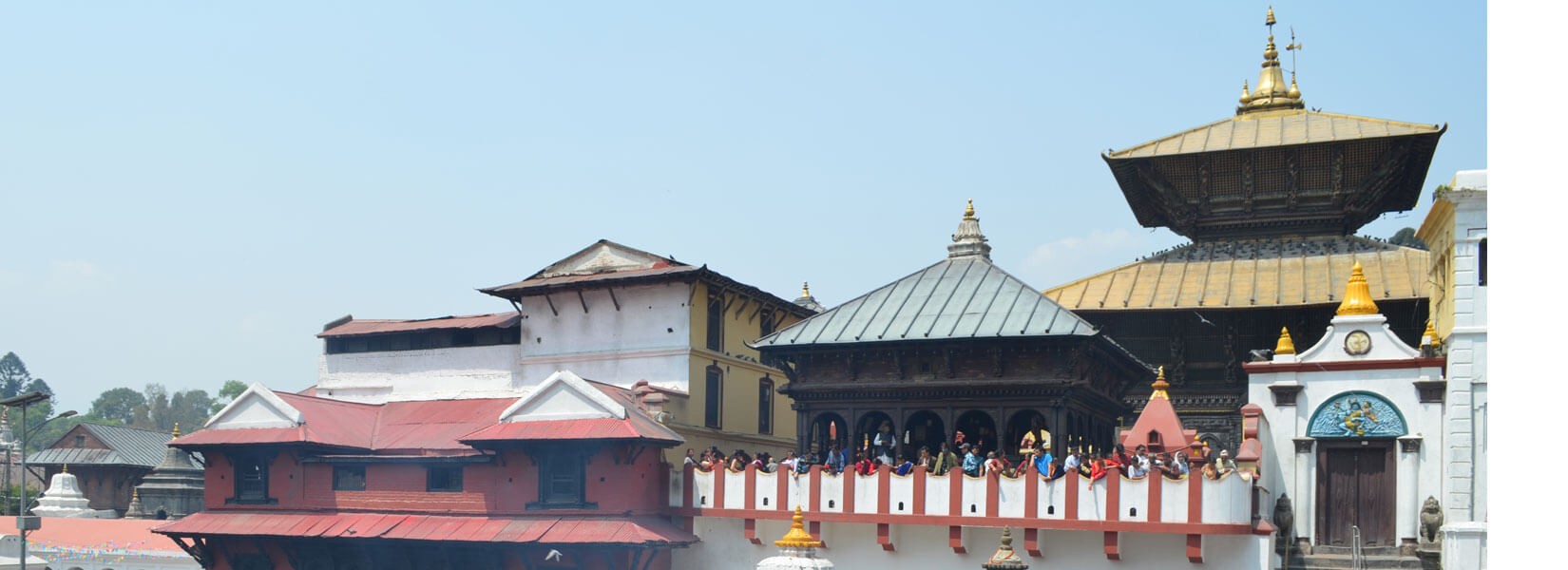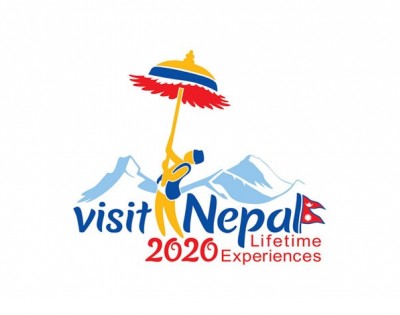The whole of Kathmandu Valley is declared a World Heritage Site because of seven structures cited by the United Nations Educational, Scientific, and Cultural Organization (UNESCO) as demonstrating historic and artistic achievements. The World Heritage Zones of Hanuman Dhoka (Kathmandu) Durbar Square, Patan Durbar Square, and Bhaktapur Durbar Square were the respective courts of kings ruling the Kathmandu valley at a time before the country was unified in the late 1760s.
Many of the structures within these zones were damaged in the earthquakes of 2015 and repairs and reconstruction is underway. An entry fee is required to enter these enchanting areas with ancient temples and architecture.
Three other World Heritage Sites in Kathmandu are the sacred temple of Pashupatinath honoring Shiva, near the airport, and the fabled stupa (Buddhist shrines) of Swayambhunath and Baudhanath, which are centuries-old landmarks and also require entrance fees.
Kathmandu
Kathmandu has a of myriad temples and attractions that awe and inspire visitors and residents of this ancient city. With Nepal’s only international airport, nearly all tourists, at some point, pass through Kathmandu (4383 feet, 1336 m). As the capital city and seat of parliament, Nepal’s largest metropolis is teeming with people and attracts Nepalis from all over the country looking for work and educational opportunities.
Kathmandu takes its name from a centuries-old structure Kastamandap that was located in Kathmandu Durbar Square. The name humbly translates to wooden pavilion and the structure formerly sat majestically in a busy square, surrounded by pedestrians and vehicle traffic, vegetable vendors as well as other regal temples. It fell during the earthquake of 2015 and is under re-construction.
Over 2.5 million residents now call the Kathmandu Valley home. It is a home with an annual growth rate of over four percent. With a high density of people and lack of adequate measures to control pollution, the joint aggregate of human and industrial activity often blankets the valley in a cloud of smog that spoils views of the snowy Himalaya to the north and northeast. On windy days, or just after a rainstorm clears out, the urban sprawl reveals the valley’s heavenly setting when a broad panorama of the distant Himalaya standing guardian can be seen. Cooking on wood and coal by some people in the valley adds to the haze. At the ground level, a cacophony of horns arises from buses, cars and motorbikes plying the streets and narrow passageways, many of which are crowded with street vendors, too.
The majority of tourists visiting Kathamandu stay in or near an area named Thamel, a suitable place for arranging travel logistics, picking up gear, relaxing and enjoying a wide-offering of food and drinks as well as a lively nightlife.
Additional areas to stay in that are popular with tourists include Paknajol to the northwest of Thamel, the Chetrapati to the southwest of Thamel. An area referred to as Freak Street in Basantapur near Durbar Square (Kathmandu) has been popular with the more laid back crowd for decades. Additionally, the area around Baudhanath Stupa has many lodges. All of these locations have a wide range of accommodation, restaurants, travel agencies, and other shops that cater to tourists. Several upper-end hotels are found along Durbar Marg, the road leading to the front gate of the former palace as well as in the Lazimpat area of town and in the nearby city of Patan (also known as Lalitpur).
Kathmandu is a fascinating city that leaves a lot for tourists to explore and discover around nearly every corner.”
Patan
PATAN (aka, Lalitpur,‘city of fine art and beauty’) is in the southern part of the valley across the sacred (although polluted) Bagmati River. It is an upscale haven for NGOs. In addition to the aforementioned World Heritage Zone of Patan Durbar Square, the Patan Museum is highly recommended to all visitors to this city. Patan’s narrows streets leave much to be discovered.
Banglamukki Temple. Get away from the tourist crowd by visiting the enchanting Banglamukki Temple in the heart of Lalitpur, especially active on Thursdays when the deity is believed to grant blessings to those seeking love and a suitable partner.
Patan’s Sankhamulghat, along the banks of the Bagmati River is Kathmandu Valley’s main attraction for Magh Sankranti.
Patan’s Krishna Temple in Durbar Square, especially popular during , Krishna Janmastami, the annual celebration of Lord Krishna’s birthday.
Rato Machhindranath is considered a God of Rain and Crops and has ties to Tantric Buddhism. The idol is ritually bathed and put on a chariot and pulled by manpower throughout the city of Patan. The chariot is three stories high and extremely heavy, requiring up to a hundred or more people to move it. Music with drums and cymbals accompany the chariot which stops overnight at four symbolic locations.
(-Seto (White) Machhindranath, presided over by Kumari, the living goddess of Kathmandu’s Durbar Square.)
Bhaktapur
BHAKTAPUR ‘city of devotees’ is in the eastern fringe of the valley, about 15 km/9 mi from central Kathmandu. In addition to the aforementioned World Heritage Zone of Bhaktapur Durbar Square, the whole town maintains a timeless mystique that is reminiscent of Old World civilization and provides a serene escape from the madding crowds of Kathmandu.
 German Version
German Version

